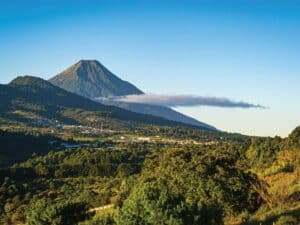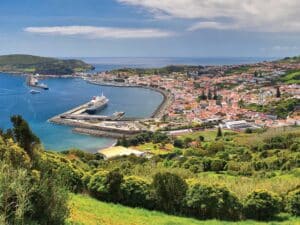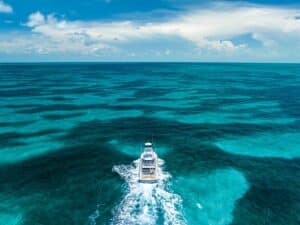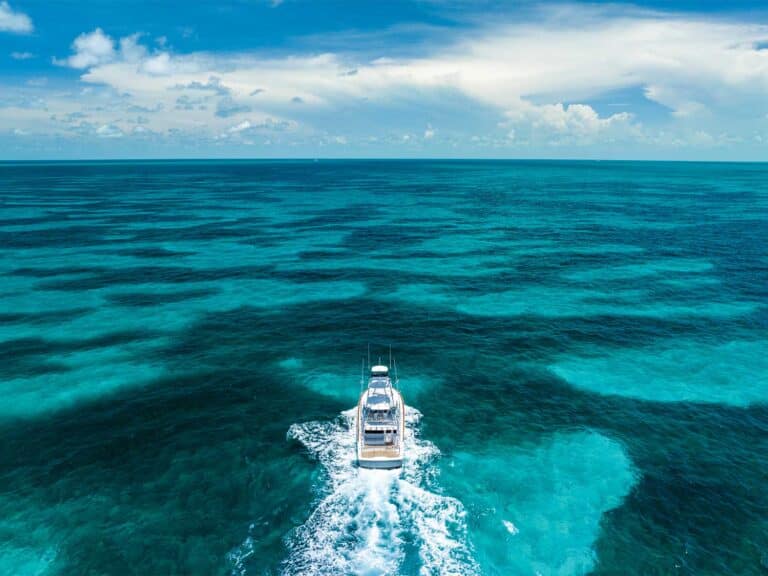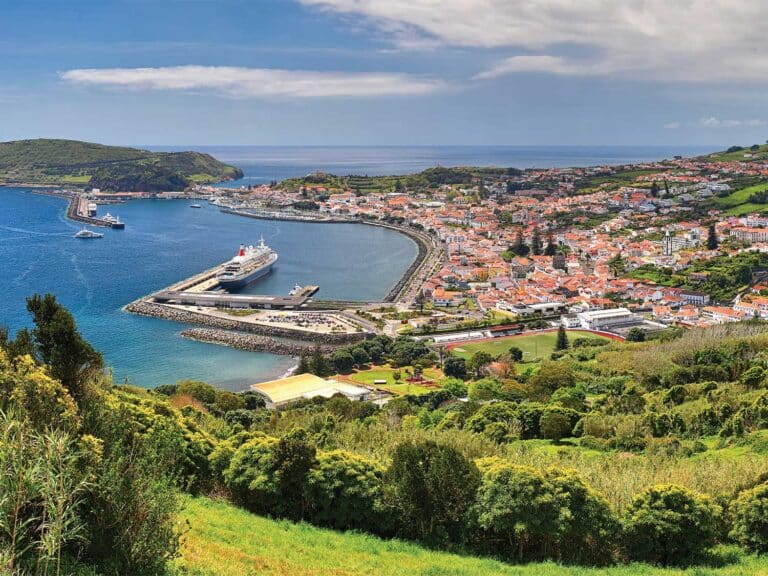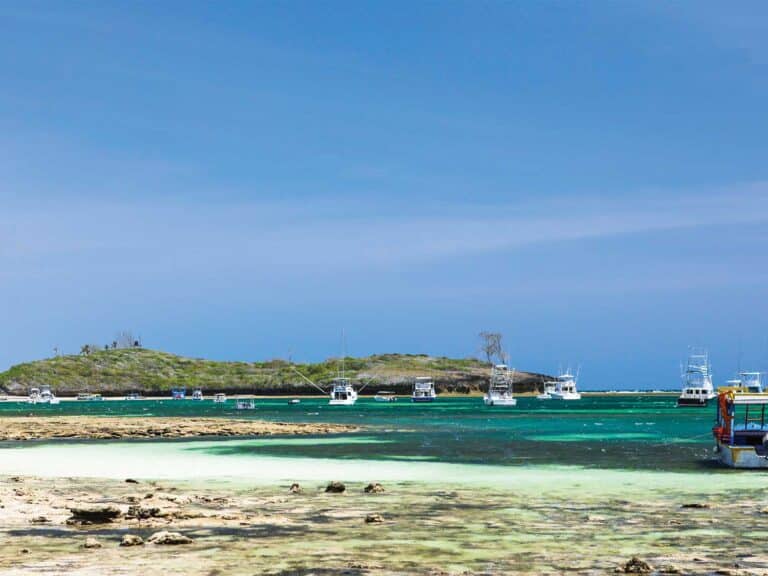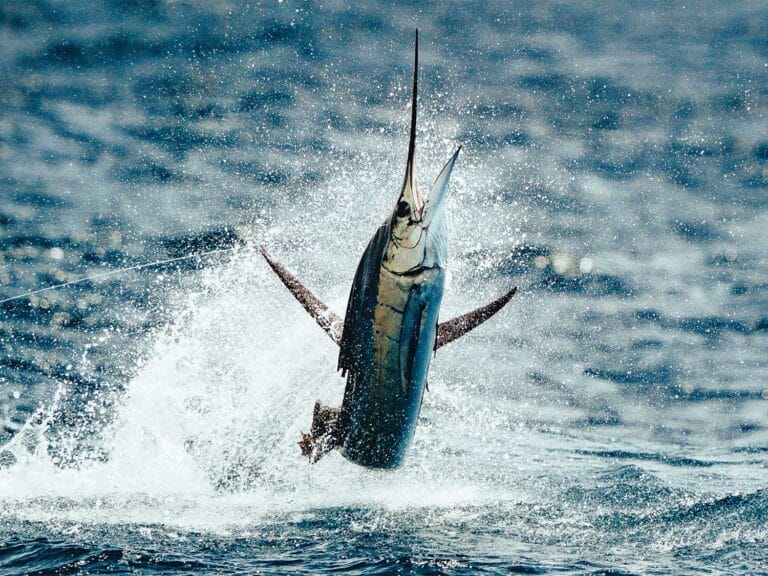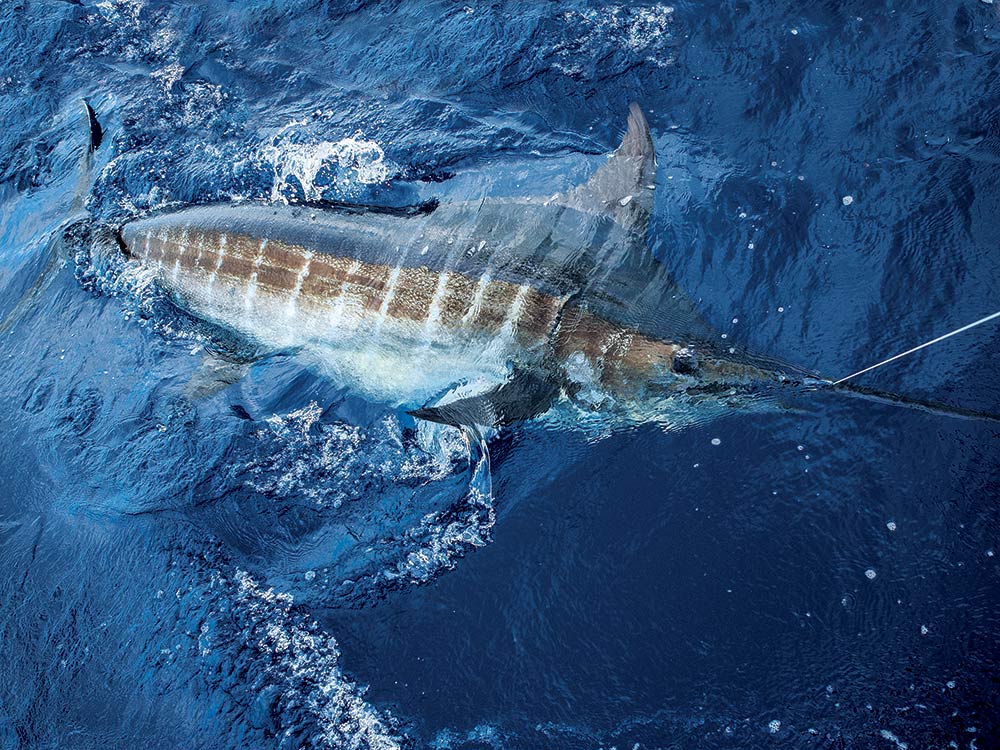
In the early years of sport fishing, anglers were not even sure if blue marlin existed in Australian waters. Now we have found them in good numbers; we just need some luck to stay connected to a giant. The challenge was to weigh a grander blue — one over 1,000 pounds. Note: Since the publication of this story in Marlin, a 1,089-pound blue marlin was caught off Western Australia. Clay Hibert caught the fish off Exmouth while fishing aboard Black Marlin, which is part of the Peak Sport Fishing fleet captained by Eddy Lawler. Not only is it the first grander caught in Australian waters, it’s the first 1,000-pound fish caught anywhere in the world in 2018.
In the Beginning
While Australia is rightly famous for our incredible black marlin fishing, with scores of granders weighed over the years, targeting blue marlin in Australia didn’t really take off until the 1970s, and strange as it might seem, it didn’t take place in the tropical waters off North Queensland. Australia’s blue marlin fishery began in New South Wales after a couple of game fishermen named Arch Livingston, from the Port Macquarie Game Fishing Club, and Joe Ritchie, from the Sydney Game Fishing Club, started probing the deep offshore grounds with lures. These guys had been to Kona, Hawaii, and experienced lure-fishing for blues while competing in the famed Hawaiian International Billfish Tournament.
The pair came home armed with a bunch of hand-crafted Hawaiian lures and their heads full of the techniques they had closely studied there. They knew blue marlin preferred much deeper water, unlike the prolific striped and black marlin they caught in the shallower inshore grounds off Australia’s east coast. Both anglers started probing the waters out over the continental-shelf drop-off and a series of seamounts and canyons well over 20 miles from shore. Suddenly, some very solid blue marlin started gracing their club’s weigh stations, and plenty of anglers — including yours truly — began asking serious questions.
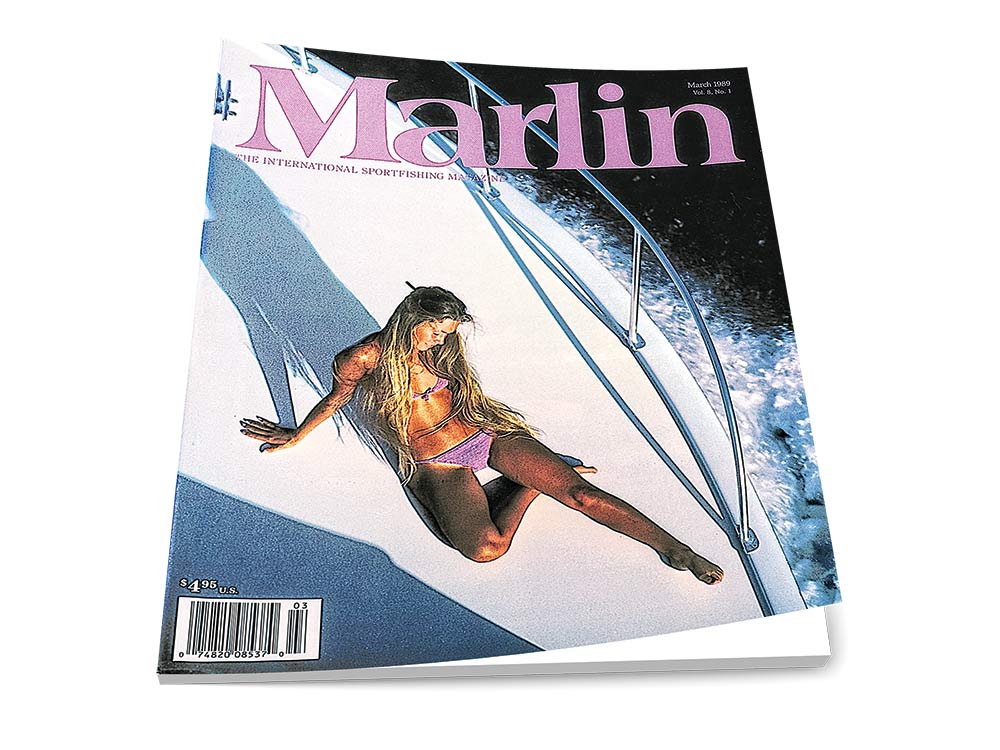
Ritchie in particular was a good friend of mine, and he invited me to go blue marlin fishing aboard his 43-foot Steber, Jay Ah, on several occasions. I’d been a stand-up light-tackle fisherman all my life until this point, and it was my introduction to heavy tackle and putting my bum in a fighting chair. After catching my first few blues, I quickly realized why the heavier tackle was needed for these hard‑running speedsters.
Other anglers interested in catching blue marlin soon found out the hard way about the tackle requirements as well. Sure, there were plenty of 150- to 250-pounders caught on light to medium tackle, but we learned there were some solid 500-pounders and even bigger fish out there that just shrugged off the lighter gear. Spool jobs and broken lines became regular conversations over the radios and back at the clubhouses.
The Rise of Lure-Fishing in Australia
All through the 1980s, the blue marlin bug affected so many anglers, and lure sales in the tackle stores went berserk. Apart from a variety of Hawaiian lures imported from the States, the Aussie brands like Pakula and Top Gun struggled to keep up with the demand for lures that performed well in our waters. The excitement and increasing number of blues encouraged me to put together my first blue marlin feature for Marlin in 1989 called “Sydney Has the Blues.”
Suddenly 80-pound- and even 130-pound-test tackle appeared on more vessels, along with sturdy fighting chairs. Many of the southern vessels started to look like the heavy-tackle charter boats in Cairns, where targeting grander black marlin required this kind of equipment. Anglers started talking up the possibilities of catching a grander blue. Did such large animals exist in our waters?
That question was soon answered when a number of big blues were hooked and lost. In 1998, angler David Leighton went closer than anyone to landing one near the grander mark when he weighed a solid 920-pounder. This was caught on 80-pound tackle in the southern New South Wales waters off Batemans Bay.
Close Encounters
A year later, and in roughly the same area, Melanie Kisbee captured the still-standing ladies-world-record blue on 80-pound tackle. This beast was caught from a 25-foot vessel, and the crew had no chance of getting the monster fish in the boat. They radioed for assistance, and a larger vessel eventually found them to transfer the marlin for the long run back to port. The extra gaffs needed to secure the beast — plus a long six-hour time frame from capture to the weigh station — resulted in a lot of fluids lost. Unfortunately, the scale registered 996.5 pounds.
Many anglers speculated: Fresh from capture, would this have been our first 1,000-pound blue?
Both of these big fish stirred Australia’s game‑fishing world even further, and anglers on both the east and west coasts were more determined than ever to weigh a grander. A surge in specialized offshore trailer boats erupted as well; many geared up with fighting chairs and 130-pound-class tackle. Even in Cairns, blue marlin fever had the charter fleet lure-fishing on the wide Coral Sea grounds late in the springtime black marlin season. A few big blues have been weighed there in recent times, like the 930-pounder on Top Shot, skippered by Capt. Ross Finlayson.
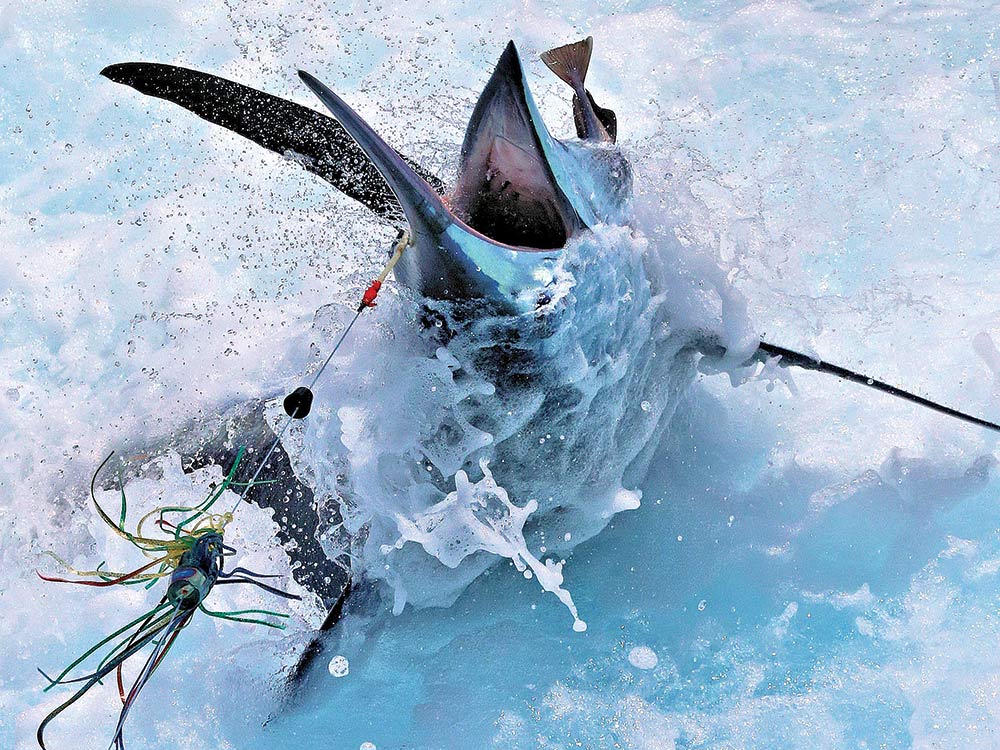
Farther south in Queensland around the Sunshine Coast, more anglers have started targeting blue marlin than ever before. Since the opening of the Sea Way on the Gold Coast, vessels big and small have been able to target the abundant blue marlin stocks. For some reason, these Gold Coast grounds have produced more blues annually than any other part of the east coast. It has become a nearly year-round fishery, and considering the incredible amount of bites they’re getting, many have predicted Australia’s Gold Coast will be the place from where the first grander will come.
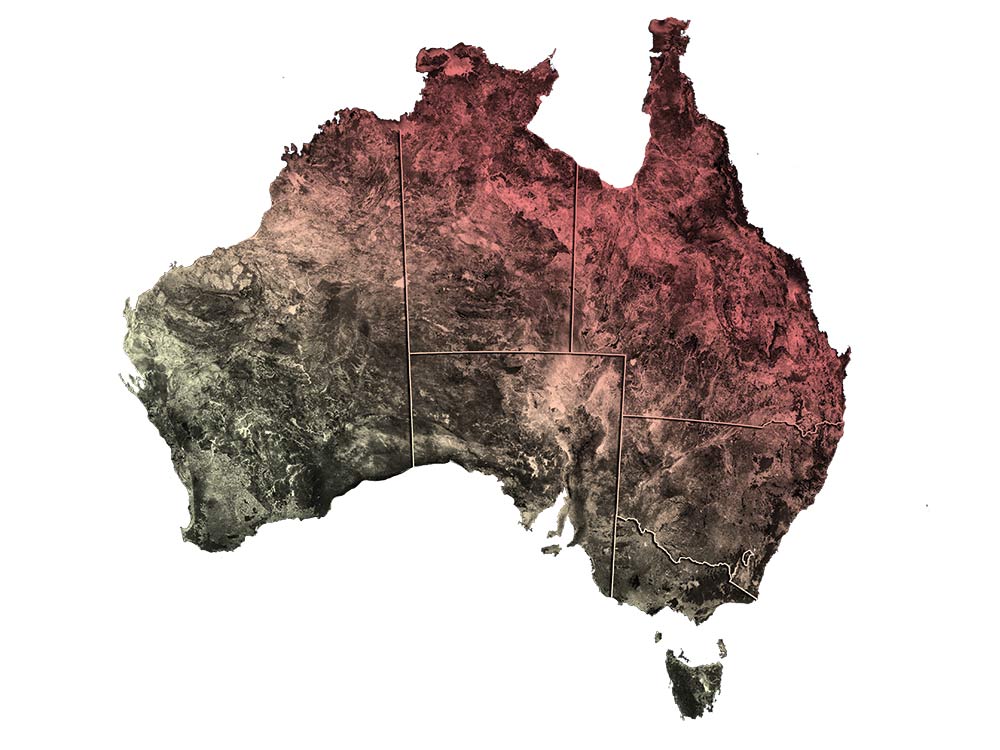
In New South Wales, where it all began, the dozen or so ports along the coast from Coffs Harbour and right down past Sydney to Bermagui host plenty of anglers chasing big blues. All these ports have good numbers of charter boats along with scores of private vessels concentrating on blue marlin in the summer and fall months.
In Western Australia, the exciting grounds off Exmouth have also exploded with anglers. Many have switched from targeting the prolific concentrations of sailfish, striped and black marlin to chase blues out wide. Again, plenty have been caught just under that grander milestone, and the biggest weighed to date there is a shade over 800 pounds. Like on the east coast, there have been possible granders lost to either inadequate tackle or just plain bad luck.
Near-Granders Seen and Lost
After another good blue marlin season, the dilemma of being granderless is something many Australian anglers find absolutely hard to believe. And to make matters worse, our nearby Kiwi anglers in New Zealand have weighed several grander blues. I could easily fill a book with all the stories of the big ones escaping capture — many by experienced captains, anglers and crews.
Just this past season, there have been a few cases worth mentioning. One was from a 21-foot trailer boat off Jervis Bay in southern New South Wales. All the action was captured on a GoPro camera clearly showing the size of the grander-plus animal they fought for more than seven hours on 80-pound tackle. In the process, they were towed out to sea more than 10 miles from where they first hooked up. The threat of severe weather approaching and being over 40 miles from port concerned the anglers to go for broke; of course, that’s exactly what happened: The line broke.
Probably the luckiest grander in the whole Pacific to avoid capture happened off the Gold Coast. Captains Bobby “Jonesy” Jones and Ross McCubbin, both of Cairns fame, were out for a leisurely day of fishing, testing Jonesy’s new 65-footer, Merlin. The vessel had never fished before, and outriggers, rod holders and a game chair had only just been fitted. All the other equipment — such as flying gaffs and tail ropes, required to secure a giant marlin — hadn’t been transferred off the old boat. The only items they had taken along were four 130-pound outfits and a bunch of their favorite lures. Jonesy’s wife, Lorraine, was aboard and eager to test the new fighting chair with whatever they hooked. She has won the battle many times with big marlin, tagging scores of huge black marlin off Cairns, including two I photographed that were well over the grander mark.
When they reached the 100-fathom continental-shelf drop-off, the warm southbound current turned the sea purple. Although there were no signs of surface life, suddenly the depth recorder indicated a large baitball in the depths. Jonesy yelled to McCubbin to get ready for a bite, and he no sooner got the words out when the left rigger bounced and the big Penn International 130 in the covering board screamed to life.
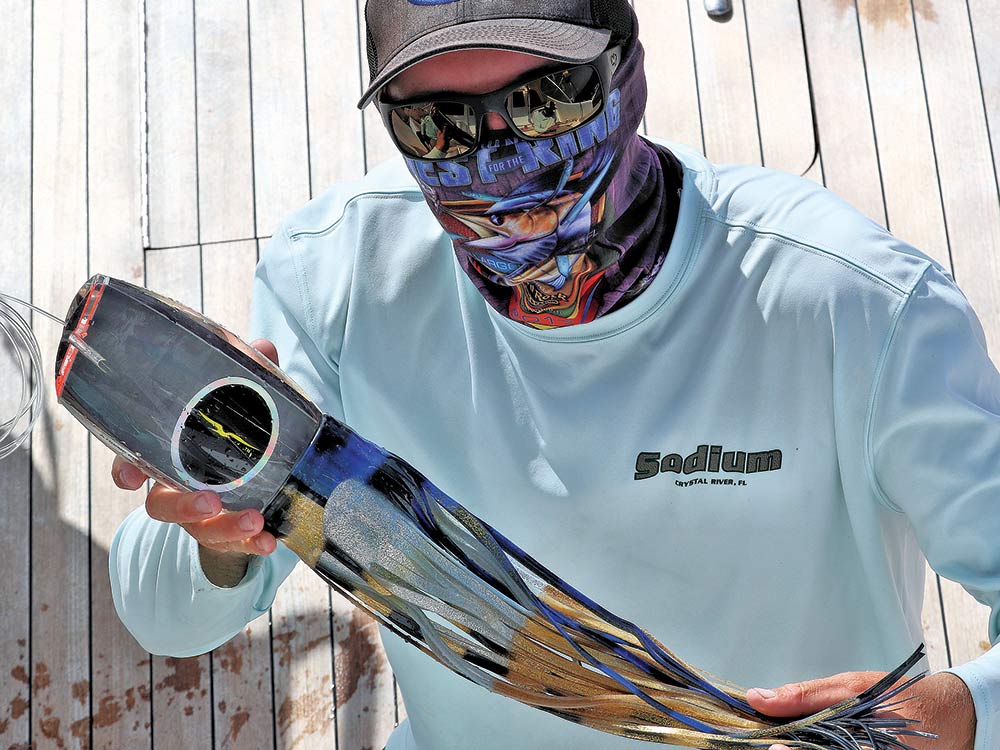
By the time Lorraine pulled the rod from the rod holder and got set up in the fighting chair, the reel had lost half its line. The excited captain yelled to his wife to ease off the drag a little because the marlin was still ripping out heaps of line. When the big run finally slowed, more than 800 yards was gone, and the chase was on. No one had actually seen the bite, but there was a huge crater left on the calm ocean surface where the lure was once swimming along. When they finally got a look at how big the marlin was, Jonesy put out a call on the radio to see if any other boats were around. Only one vessel responded, but they were 35 miles away and hooked up to a blue marlin themselves.
Lorraine battled on for just over two hours and, like all her encounters with giant blacks, she was more than happy to see the big fish released. Even after all that time on heavy tackle, the estimated 1,100-pounder was still pulling hard and couldn’t be held even after several attempts on the wire. They eventually released it in perfect condition.
The latest incident was off Sydney in the Port Hacking Game Fishing Club’s 100 Tournament. The club’s new 53-foot Viking The Outlaw hooked up on a beast of a blue marlin, and of course Murphy’s Law made sure that the lure on the only 80-pound outfit among the four 130s was the one to get piled on by the huge blue. During the three-hour battle, the big fish jumped many times. With the prospect of being well over the grander mark, the tag poles were quickly replaced with several flying gaffs. One of the crewmen had the leader in hand three times, but the giant marlin powered away every time.
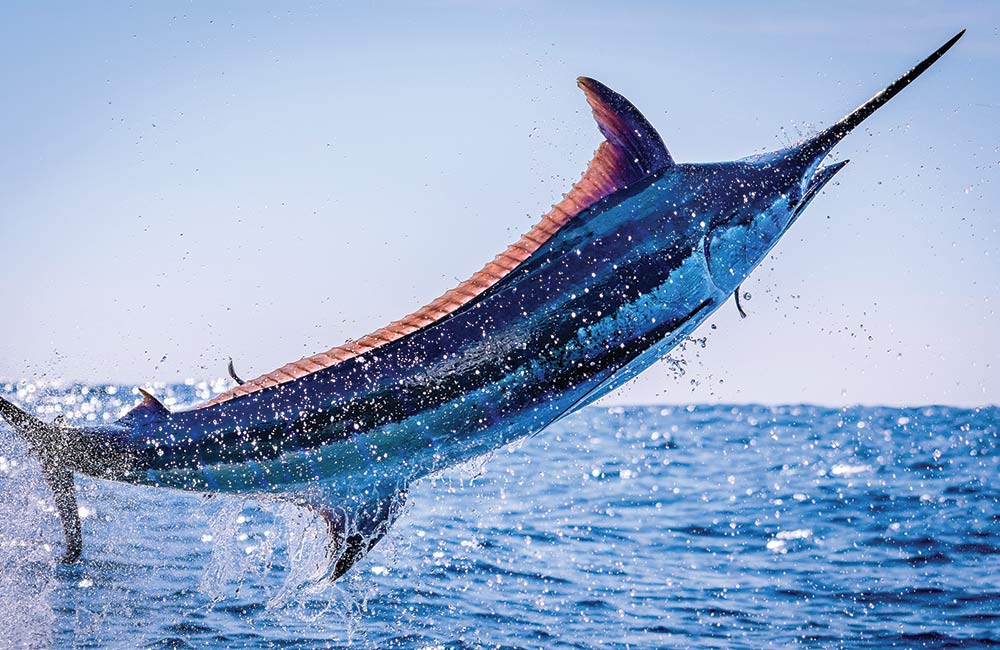
The last attempt holding the leader, another crewman actually managed to secure one of the flying gaffs in the marlin’s back. The angry blue jumped away from the boat again, ripping out the gaff and simultaneously breaking the heavy monofilament leader. Again, the many photos and videos taken clearly showed her size: another possible grander gone.
It’s almost like there is now a jinx for Australian anglers, and the mission to weigh a grander blue has now become a frustrating one. Even though we have the best of modern tackle and vessels, plus the right techniques to hook these monsters, something always seems to go wrong. However, I predict that it is only a matter of time before one will be weighed over the magic 1,000-pound mark.

